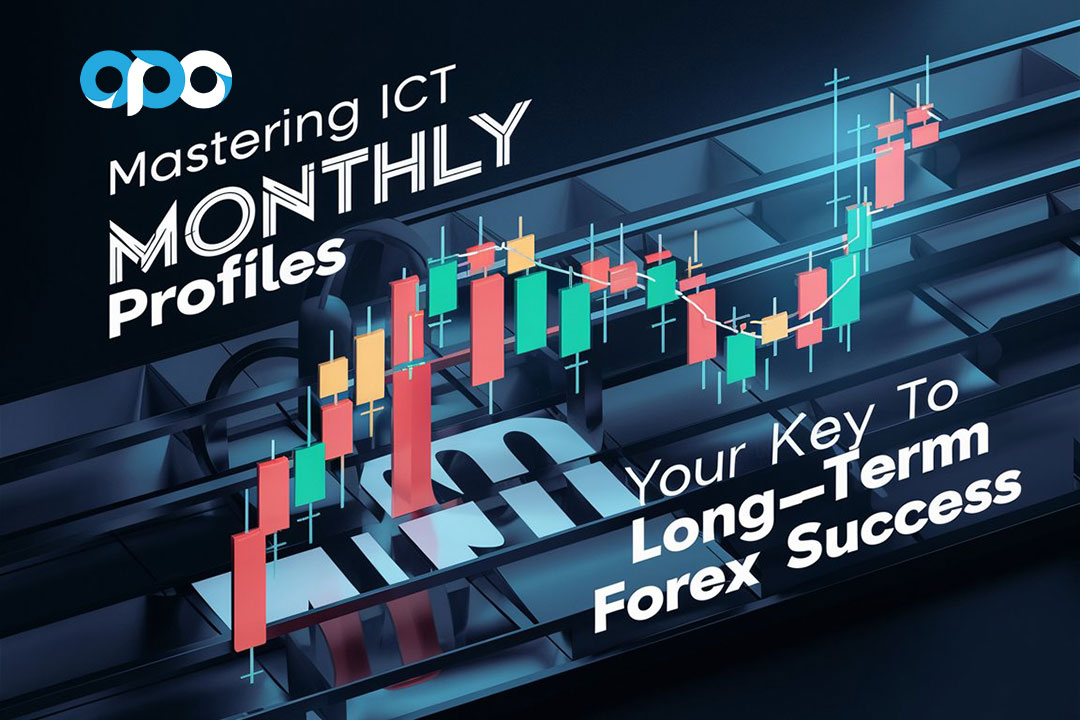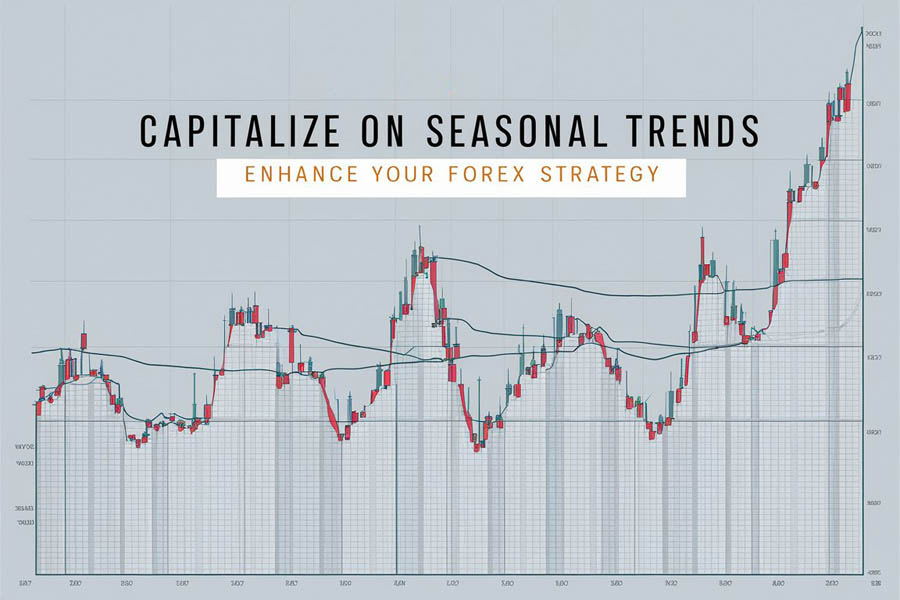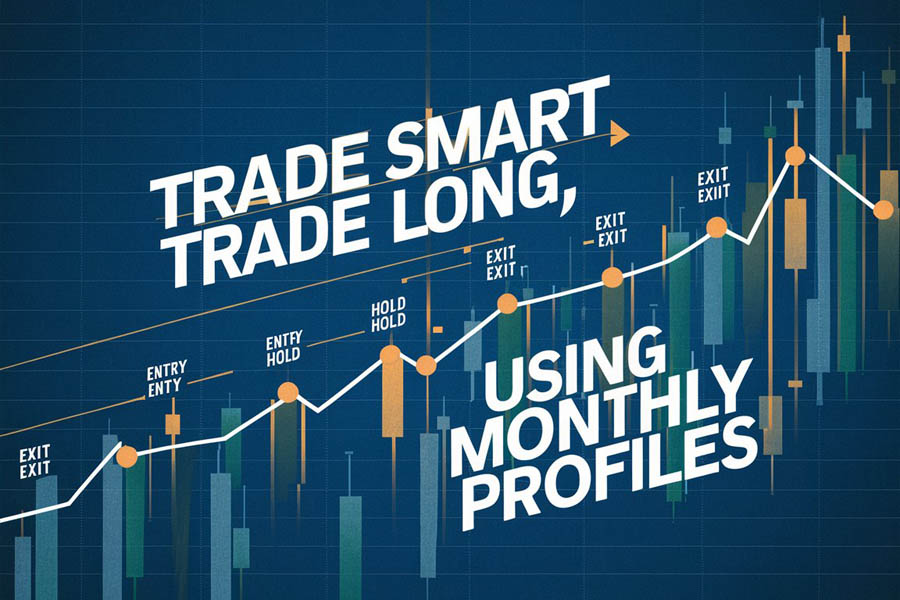What are ICT Monthly Profiles and how can they enhance your trading strategy? ICT (Inner Circle Trader) Monthly Profiles are a powerful tool in the world of forex broker trading, offering traders a comprehensive view of market trends and behaviors on a monthly basis. Understanding and leveraging these profiles can significantly improve your ability to anticipate market movements and make more informed trading decisions. By analyzing monthly profiles within the ICT framework, you can align your long-term outlook with short-term trading setups, allowing for more precise entries and exits in the market. This approach not only helps in identifying key support and resistance levels but also in recognizing seasonal trends and economic indicators that influence price action. In this article, we will dive into the essential aspects of ICT Monthly Profiles, explore their patterns, and discuss how to effectively incorporate them into your trading strategy for enhanced profitability.

What Are ICT Monthly Profiles?
Definition of Monthly Profiles within the ICT Framework
ICT (Inner Circle Trader) Monthly Profiles are sophisticated analytical tools that represent the market’s behavior over a one-month period. These profiles are created by plotting historical price data, allowing traders to observe and analyze the market’s structure and key levels within that timeframe. By examining these profiles, traders gain insights into market trends, support and resistance levels, and overall market sentiment.

Importance of Understanding Monthly Market Structure
Grasping the monthly market structure is crucial for several reasons:
- Long-Term Trends: Monthly profiles provide a broader view of market trends, helping traders identify long-term patterns and shifts in market behavior.
- Key Levels: Monthly profiles highlight significant support and resistance levels, crucial for setting up trading strategies and managing risk.
- Market Sentiment: Analyzing monthly profiles helps traders gauge overall market sentiment and adjust their strategies accordingly.
How Monthly Profiles Relate to Higher and Lower Timeframes
Monthly profiles are integral to connecting different timeframes:
- Higher Timeframes: Monthly profiles offer a macro view that complements analysis on higher timeframes, such as weekly charts. They help traders understand the broader market context and identify key levels that influence longer-term trends.
- Lower Timeframes: For shorter-term trading strategies, monthly profiles provide context for understanding price movements on lower timeframes like daily or intraday charts. They help traders make sense of price action within the broader market framework.
Key Monthly Profile Patterns
Identification of Common Monthly Profile Shapes
Monthly profiles can exhibit various shapes, each indicating different market conditions. Common shapes include:
- Balanced Profile: Indicates a market in equilibrium, where prices have traded within a relatively narrow range throughout the month.
- Trending Profile: Characterized by a distinct skew, suggesting a strong directional trend, with price action showing clear support or resistance areas.
- Bimodal Profile: Shows two distinct trading ranges within the month, often indicating a market experiencing significant shifts in sentiment or volatility.

Significance of Monthly High and Low Points
Monthly high and low points are crucial indicators in ICT Monthly Profiles:
- Resistance and Support Levels: High and low points often act as significant resistance and support levels for future trading. These levels can serve as important entry and exit points.
- Market Extremes: Identifying where the price reached its highest and lowest points helps traders understand market sentiment extremes and potential areas for price reversals.
Role of Seasonal Trends in ICT Monthly Profiles
Seasonal trends play a significant role in the analysis of ICT Monthly Profiles, as they can profoundly influence market behavior throughout the year. Understanding these trends is crucial for traders aiming to align their strategies with predictable market patterns and economic cycles. Here’s an expanded look at how seasonal trends impact ICT Monthly Profiles and how you can leverage this knowledge to improve your trading strategy.

Understanding Seasonal Trends
Seasonal trends refer to recurring patterns that occur at specific times of the year due to various factors, including economic conditions, fiscal policies, and market sentiment. These trends can cause predictable changes in market behavior, which can be observed through ICT Monthly Profiles.
Types of Seasonal Trends:
- Calendar-Based Trends: These trends occur due to specific dates or periods within the calendar year. For example, financial markets often experience increased volatility during the end-of-year period as traders re-balance their portfolios or adjust their positions before year-end.
- Economic Cycles: Economic indicators such as interest rates, inflation, and employment data can create seasonal patterns. For instance, central banks may alter monetary policy in response to economic conditions that follow a cyclical pattern, impacting market movements accordingly.
- Fiscal Year Cycles: Companies and governments often operate on fiscal years that differ from calendar years, which can influence market behavior. For instance, the end of a fiscal year might lead to significant market adjustments as companies finalize their financial statements and perform tax-related transactions.
Impact on Monthly Profiles
Seasonal trends can significantly impact the formation and interpretation of ICT Monthly Profiles in several ways:
- Market Volatility: Seasonal events, such as major economic announcements or market holidays, can lead to increased volatility. This volatility can be reflected in the monthly profiles, with larger price swings or unusual trading volumes during certain periods.
- Trend Shifts: Understanding seasonal trends helps in identifying potential trend shifts that might not be apparent from a single month’s profile. For instance, if historical data shows a consistent upward trend during a particular season, this can inform expectations for future market behavior during the same period.
- Volume Patterns: Trading volumes often vary with seasonal trends. For example, trading volumes might increase during the release of important economic data or decrease during holiday seasons. These volume patterns can be seen in monthly profiles and used to gauge market activity.
Read more: EMA Crossover Magic
Examples of Seasonal Trends in Forex Markets
- End-of-Year Rally: Historically, financial markets often experience a “Santa Claus Rally” towards the end of the year, where prices tend to rise due to increased investor optimism and year-end portfolio adjustments. Analyzing monthly profiles from previous years can help identify this trend and adjust your trading strategy to capitalize on potential price increases.
- Summer Lull: Forex markets sometimes experience reduced activity and lower volatility during the summer months, as many traders take vacations and trading volumes decrease. Recognizing this pattern in ICT Monthly Profiles can help you anticipate quieter market conditions and adjust your trading approach to avoid unnecessary risks.
- Election Cycles: Major elections can create seasonal patterns in market behavior. For instance, uncertainty surrounding elections can lead to increased volatility in the months leading up to the election and stabilization afterwards. Analyzing monthly profiles around election periods can help you understand and anticipate these market shifts.
Trading with ICT Monthly Profiles
Trading with ICT Monthly Profiles is a sophisticated approach that allows traders to gain a comprehensive understanding of the market’s behavior over an extended period. By leveraging the insights provided by monthly profiles, traders can formulate robust strategies that align with long-term market trends and key price levels. This section will delve into how to effectively use monthly profiles for long-term market outlooks, combine them with shorter timeframe setups, and manage risk for long-term positions.

Combining Monthly Analysis with Weekly and Daily Profiles for Enhanced Entry
Multi-Timeframe Synergy
To optimize trading decisions, combining ICT Monthly Profiles with weekly and daily profiles is a highly effective strategy. This multi-timeframe analysis allows traders to align their long-term outlook with more precise entry points identified on shorter timeframes. By doing so, traders can enhance the accuracy of their trades and reduce the risk of entering the market at suboptimal levels.
- Weekly Profiles: Weekly profiles provide a more granular view of the market’s behavior within the broader context of the monthly trend. They are particularly useful for identifying intermediate support and resistance levels, as well as potential trend reversals that may not be immediately apparent on the monthly chart.
- Daily Profiles: Daily profiles further refine the analysis by offering insights into the market’s day-to-day fluctuations. This level of detail is essential for pinpointing the exact moments to enter or exit trades, ensuring that traders capitalize on short-term movements while remaining aligned with the overall monthly trend.
Read more: Mastering ICT Daily Profiles in Forex
Aligning Weekly Profiles with Monthly Trends
Weekly profiles serve as a bridge between the broader monthly analysis and the more detailed daily setups. By analyzing weekly profiles, traders can confirm whether the market’s behavior on a week-to-week basis aligns with the monthly trend. This alignment is crucial for ensuring that trades are placed in harmony with the long-term market direction.
- Confirmation of Trends: If the monthly profile indicates a bullish trend, and the weekly profile shows consistent higher lows and higher highs, this alignment reinforces the bullish outlook. Traders can use this confirmation to confidently enter long positions.
- Early Warning Signals: Weekly profiles can also serve as early warning signals for potential reversals. For instance, if a bullish monthly trend is met with a bearish weekly profile showing lower highs and lower lows, traders might exercise caution and look for additional confirmation before entering a long position.
Refining Entry Points with Daily Profiles
Daily profiles provide the most precise level of analysis within the context of monthly and weekly trends. They allow traders to time their entries with exceptional accuracy, reducing the risk of entering too early or too late.
- Optimal Timing: Daily profiles can reveal the best timing for entries based on intraday price action. For example, if the monthly and weekly profiles both indicate a bullish trend, a trader can use the daily profile to identify a temporary pullback or consolidation phase as an ideal entry point.
- Minimizing Risk: By using daily profiles to refine entry points, traders can minimize risk by entering trades when the market has completed a short-term correction, rather than chasing the price during a strong rally. This approach helps secure a better entry price and reduces the likelihood of getting stopped out by short-term volatility.
Combining Profiles for Strategic Entry
The synergy between monthly, weekly, and daily profiles creates a comprehensive trading strategy that maximizes the potential for successful trades. Here’s how this multi-timeframe approach can be applied:
- Step 1: Monthly Trend Analysis: Start by identifying the overall market trend using the monthly profile. Determine whether the market is bullish, bearish, or neutral.
- Step 2: Weekly Confirmation: Next, analyze the weekly profile to confirm the monthly trend. Look for consistent patterns that align with the long-term trend, such as higher highs in a bullish market or lower lows in a bearish market.
- Step 3: Daily Precision: Finally, use the daily profile to time your entry. Identify short-term corrections or consolidations that offer a lower-risk entry point in the direction of the overall trend.
Opofinance: Your ASIC Regulated Forex Broker
When it comes to choosing a reliable Forex broker, Opofinance stands out with its ASIC regulation, offering a secure and transparent trading environment. As an ASIC-regulated broker, Opofinance ensures that your trading activities are protected by stringent regulatory standards, providing peace of mind and confidence in your trading decisions. With a user-friendly platform, competitive spreads, and a range of trading tools, Opofinance is committed to supporting traders in achieving their financial goals. Experience the benefits of trading with a trusted broker and enhance your trading strategy with Opofinance.
Read more: Mastering ICT Weekly Profiles

Conclusion
Mastering Forex trading requires more than just understanding short-term market movements—it demands a broader perspective. ICT Monthly Profiles offer this by providing a comprehensive view of market trends and behaviors over extended periods, making them a crucial tool for long-term success. By analyzing these profiles, traders can identify key support and resistance levels, recognize market turning points, and understand the influence of seasonal trends and economic indicators.
Incorporating ICT Monthly Profiles into your strategy allows for a more informed approach to trading. Instead of relying solely on short-term indicators, you can align your trades with the dominant market direction, reducing the risk of unexpected movements. When combined with weekly and daily profiles, this multi-timeframe analysis helps pinpoint precise entry and exit points, ensuring that your trades are well-timed and aligned with the broader trend.
For traders aiming to elevate their strategy, ICT Monthly Profiles are a game-changer. They provide the insights needed to make informed decisions, enhance timing, and position trades effectively. By mastering these profiles, you gain a strategic edge, enabling you to navigate the complexities of Forex trading with confidence and consistency. This approach not only boosts your profitability but also solidifies your long-term success in the dynamic world of Forex trading.
How can seasonal trends be identified using ICT Monthly Profiles?
Seasonal trends can be identified in ICT Monthly Profiles by analyzing recurring patterns and market behavior during specific times of the year. Look for consistent price movements or volatility changes that align with historical seasonal trends.
What are the benefits of combining monthly profiles with shorter timeframe analysis?
Combining monthly profiles with shorter timeframe analysis provides a comprehensive view of market conditions. It helps validate trade signals, refine entry and exit points, and align short-term trades with broader market trends.
How can advanced trading strategies benefit from understanding ICT Monthly Profiles?
Advanced trading strategies can benefit from ICT Monthly Profiles by offering insights into long-term market trends, key levels, and complex profile formations. This understanding allows traders to develop sophisticated strategies such as swing trading and breakout trading.







